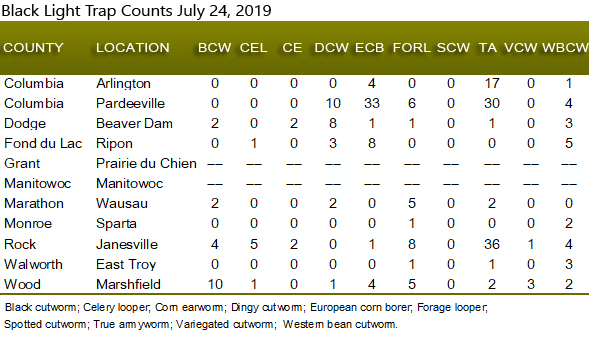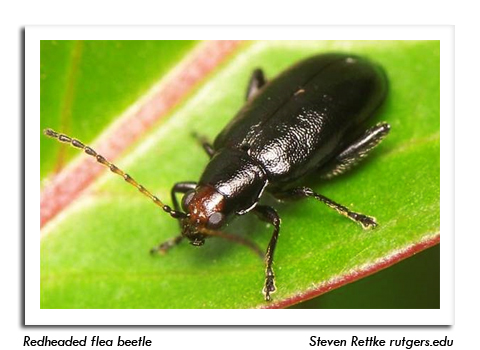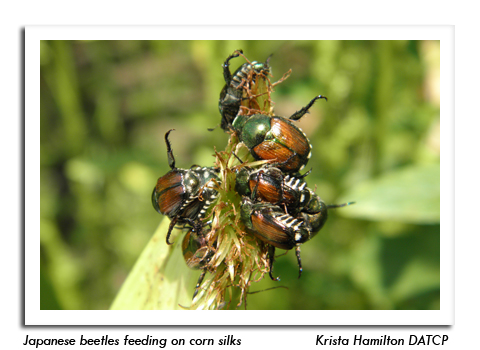
 |
|
|
Corn
Volume 64 Number 13 Date 07/25/2019 REDHEADED FLEA BEETLE - Significant numbers of this flea beetle were observed by a DATCP surveyor Dane and Marathon County corn. According to the report, the beetles were abundant on corn leaves (<5 per leaf), where they were causing noticeable defoliation. The window-paning injury resulting from this species is similar to leaf feeding of adult corn rootworm beetles and is usually superficial. Although this beetle is not considered a major threat to field crops, the high populations observed suggest that fruits, vegetables and soybeans could be at risk of damage and should be monitored for flea beetle activity. WESTERN BEAN CUTWORM - Moth emergence accelerated this week. According to the UNL-UMN degree day model for this insect, 25% of the moth flight should be complete across the southern half of the state with the accumulation of 2,577 degree days (modified base 38°F/max 75°F). The DATCP network of pheromone traps registered a total of 259 moths from July 18-25, compared to 51 moths during the previous week. The current state cumulative count is 314 moths in 57 traps. Scouting to estimate egg density is recommended at this time. If 5% or more of plants are infested and control is warranted, the optimal timing for insecticide treatment is at 90-95% tassel emergence. JAPANESE BEETLE - Beetles are prevalent in low to moderate numbers in corn. DATCP surveys indicate that counts range from 1-25 beetles per 100 plants and are still well below the economic threshold of three or more beetles per ear, when silks are being clipped to ½ inch during pollination. Infestations are generally limited to the field margins. Beetles are expected to grow more numerous and damaging as silks become more widely available. Scouting several areas in the field interior, in addition to field edges where beetles are usually concentrated, is suggested for corn that has reached the silking stage. EUROPEAN CORN BORER - Surveys of corn found one significant infestation affecting 46% of plants in Richland County on July 23. Another field near Hollandale in Iowa County had an estimated infestation rate of 18%, but all others had infestations affecting fewer than 5% of plants. The treatment window for the second-generation larvae has opened near Beloit, La Crosse, Madison and other advanced southern and western locations where 1,550 degree days (modified base 50°F) have accumulated. This window extends longer than the first-generation window and will remain open until 2,100 degree days have been reached. -- Krista Hamilton, DATCP Entomologist 





|
|
|